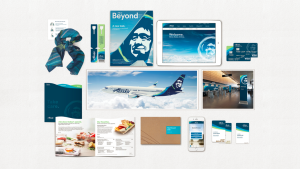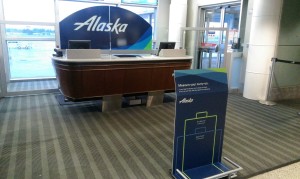How to Keep your Brand Update from Falling Short
A brand refresh or a complete rebrand are events in an organization’s life cycle that call for big investments and big planning, as they can shape an entire brand for many years to come. Not to mention, the amount of money necessary for completing a full implementation of a new brand can greatly impact an organization’s budget, especially for the immediate launch.
The scale of a change like this requires an implementation plan. It is rare that a company has a whole team standing aside with their sole responsibility to implement a brand.
For instance, with the new Alaska Airlines rebranding efforts, the implementation included painting planes, sending out new credit cards to members, updating such brand touch points as signage in airports, plane interiors and uniforms, and much more. This doesn’t even take into account the time and money spent by their marketing and public relations teams in publicizing and notifying their audience about the changes.
their audience about the changes.
This is one of the (many) reasons why a brand refresh or rebrand shouldn’t be taken lightly, and why it’s often best to leave much of the work to branding professionals, who can align the teams involved while creating a well-rounded strategy that successfully connects the new brand’s vision with the brand elements.
The real purpose of the rebrand can also get lost without a strong change factor to back it up. Alaska Airlines commented on the change by saying, “Our values stay the same, but it’s time for our brand to show up bigger.” They have long since expanded their reach outside of the Pacific Northwest, now reaching as far as Mexico and the east coast of the U.S. Their brand had such strong connotation to their original markets (which their brand name only helped to strengthen) that the organization felt a brand overhaul was necessary to break out of their market “bubble” and represent where they stand currently.
This is one of the most common reasons for a brand refresh or a rebrand – the old brand simply doesn’t accurately represent what the organization used to offer, and not what they offer now or what they want to stand for. Another brand following this strategy for a rebrand/brand refresh is Google, who created the Alphabet brand to better encompass the wider array of services outside of search that fall under the brand umbrella.
Evaluating Your Brand – Are You Due for a Refresh or a Rebrand?
However, with the Alaska Airlines brand update, the change was disproportional to the stated goal. In other words, the eskimo head did get bigger, but as for the brand itself… not much has really changed. Despite big statements about their brand “overhaul” and a new beginning for a new brand, when mostly the only rebranding that’s been done is kept the same brand image and added a splash of color, their audience may not be as inclined to believe  their rhetoric.
their rhetoric.
If the boxes are checked and the time is right, a brand refresh or rebrand could be just what your organization needs. However, the work doesn’t end when the new brand is rolled out. Your new brand elements and your brand story must align, or else it can seem like your big brand announcement is much ado about nothing.
Addison Whitney is a global branding firm with a passion for building strong brands.
To learn more about Addison Whitney, visit our website at AddisonWhitney.com, or contact us here.